AI News
How Microsoft’s MAI-DxO is Changing Healthcare Diagnosis
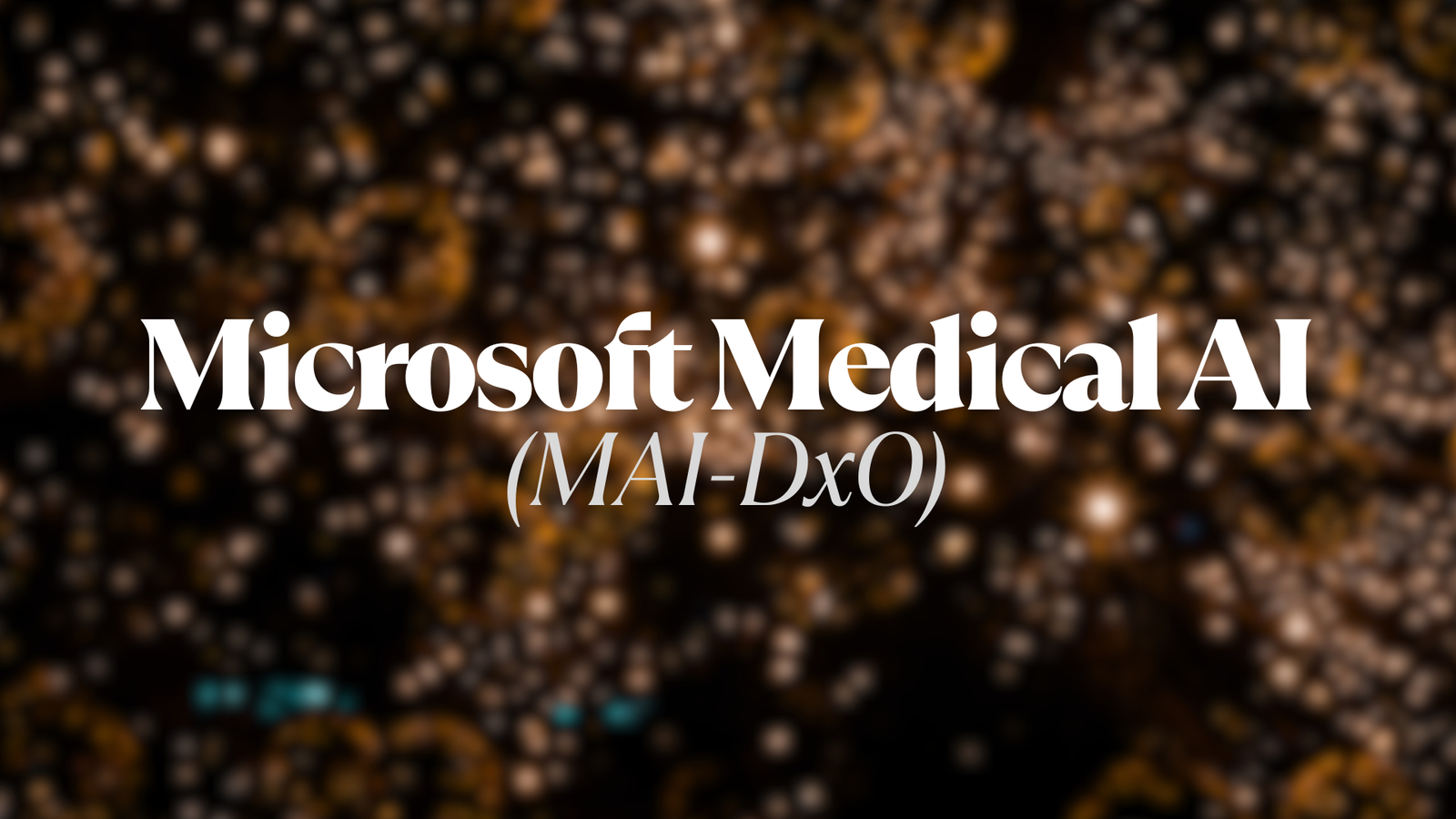
Picture this: you’re sitting in a doctor’s office, describing symptoms that have been puzzling you for weeks. Your physician furrows their brow, orders several tests, and you’re left wondering if you’ll ever get a clear answer. Now imagine if that same consultation involved an AI system that could diagnose your condition with 85% accuracy while your doctor might only get it right 20% of the time. Sound like science fiction? Well, it’s not anymore.
Microsoft’s latest breakthrough in medical AI has sent shockwaves through the healthcare industry. The Microsoft Medical AI Diagnostic Orchestrator (MAI-DxO) isn’t just another AI tool—it’s a complete game-changer that’s redefining how we think about medical diagnosis. Let’s dive into why this technology is causing such a stir and what it means for the future of healthcare.
What Exactly is Microsoft Medical AI’s MAI-DxO?
Here’s where things get really interesting. The MAI-DxO isn’t your typical AI diagnostic tool that simply crunches numbers and spits out results. Instead, it turns any language model into a virtual panel of clinicians: it can ask follow-up questions, order tests, or deliver a diagnosis, then run a cost check and verify its own reasoning before deciding whether to proceed.
Think of it as having a team of the world’s best doctors collaborating on your case, but they never get tired, never have bad days, and can process information at lightning speed. The system doesn’t just analyze your symptoms all at once—it follows a methodical approach that mirrors how the best physicians work.
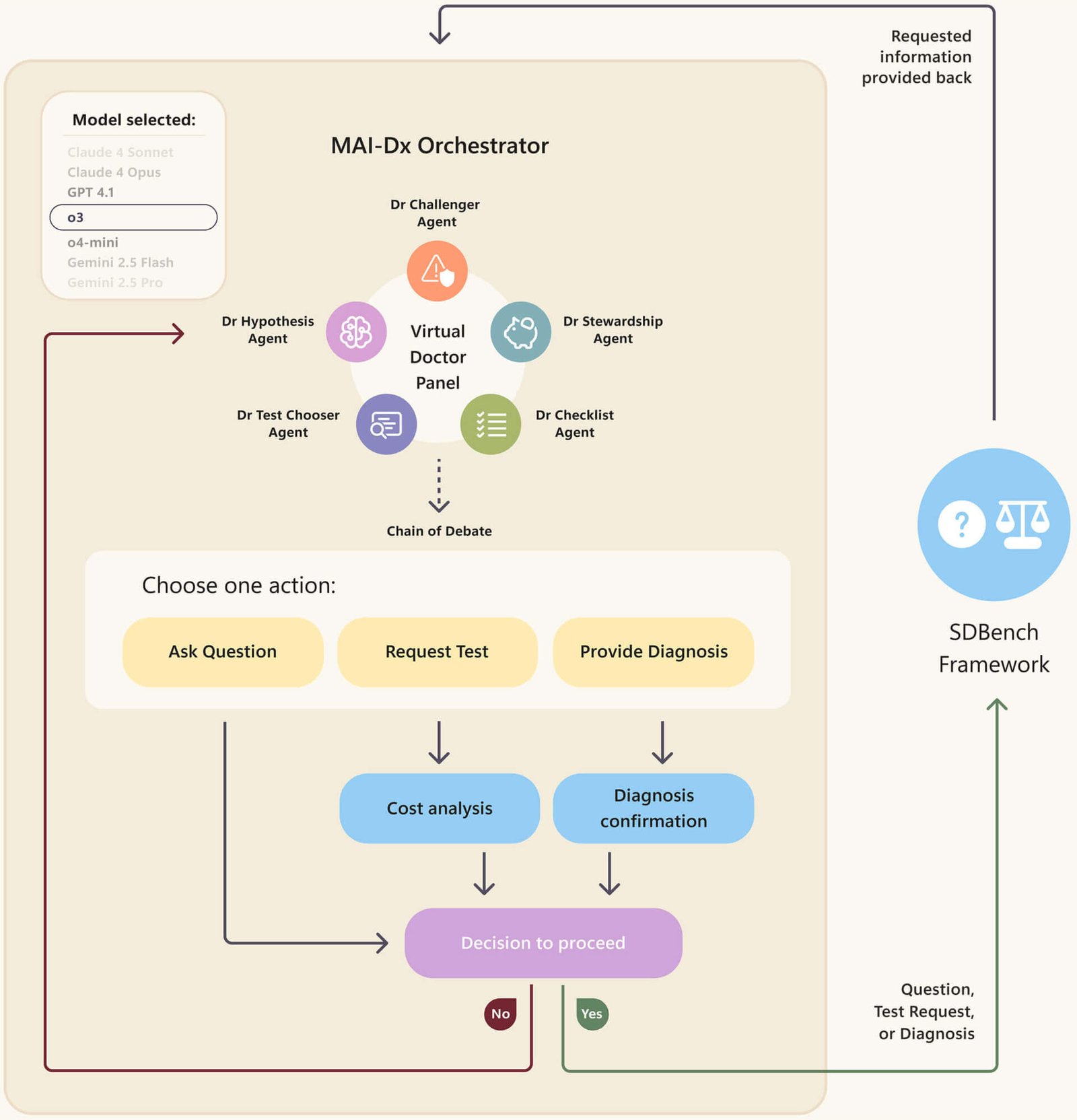
MAI-DxO (Image Credit – Microsoft)
Rather than analyzing complete case information at once, MAI-DxO follows a sequential process—starting with limited patient information, asking targeted questions, ordering specific tests, and gradually building toward a diagnosis. It’s like watching a master detective solve a complex case, but instead of hunting down criminals, it’s hunting down diseases.
The Numbers Don’t Lie: MAI-DxO vs. Human Doctors
Now, let’s talk about the elephant in the room—the performance statistics that have everyone talking. Microsoft’s new model-agnostic MAI Diagnostic Orchestrator (MAI-DxO) achieved 85.5 percent diagnostic accuracy—outperforming generalist physicians, who reached the correct diagnosis 20 percent of the time, on average.
That’s not a typo. We’re talking about more than four times better accuracy than experienced human physicians. But here’s the kicker—MAI-DxO also reduced diagnostic costs by 20 percent compared to physicians, with some reports suggesting cost reductions of up to 70% in certain scenarios.
You might be wondering, “How is this possible?” Well, the system correctly diagnoses 85% of diagnostically complex cases published by the New England Journal of Medicine (NEJM), compared to a mean accuracy of 20% among the practicing physicians. These weren’t simple cases either—we’re talking about the kind of diagnostic puzzles that keep doctors up at night.
How Microsoft Medical AI Actually Works: The Magic Behind the Curtain
So what makes MAI-DxO so special? It’s all about orchestration. The system is designed to emulate a virtual panel of physicians with diverse diagnostic approaches collaborating to solve diagnostic cases. Imagine having access to a room full of specialists, each bringing their unique perspective to your case.
Like a human physician, MAI-DxO diagnoses by analyzing symptoms, posing questions, and recommending medical tests. A key feature is its ability to optimize costs, preventing the ordering of superfluous diagnostics that contribute to overspending in healthcare.
The system is incredibly smart about resource management. The MAI-DxO, being an orchestrator, accesses multiple language models and integrates diverse data sources. It is also configurable so that it can be told to operate within defined cost constraints. This means it won’t order unnecessary tests just to be safe—it’s strategic about what information it needs to reach a diagnosis.
Real-World Impact: What This Means for Patients and Healthcare
Let’s face it—healthcare costs are through the roof, and diagnostic errors are more common than we’d like to admit. Traditional medical diagnosis often involves a frustrating cycle of appointments, tests, second opinions, and sometimes, unfortunately, misdiagnosis. Microsoft Medical AI is poised to change all of that.
The practical implications are staggering. When you consider that the team tested their system on 304 diagnostically challenging cases, and it consistently outperformed human physicians, we’re looking at a technology that could save lives, reduce suffering, and cut healthcare costs simultaneously.
Cost Savings That Actually Matter
Healthcare spending is a major concern for individuals and healthcare systems worldwide. The ability of MAI-DxO to reduce diagnostic costs while improving accuracy addresses two critical problems at once. The system can operate within defined cost constraints to help prevent excessive testing, which means fewer unnecessary procedures and lower bills for patients.
Speed and Accessibility
One of the most exciting aspects of Microsoft Medical AI is its potential to democratize access to high-quality diagnostic expertise. While it might take weeks to get an appointment with a specialist, an AI system like MAI-DxO could provide expert-level diagnostic support instantly, anywhere in the world.
The Technology Behind the Breakthrough
What makes MAI-DxO so revolutionary isn’t just its accuracy—it’s how it achieves that accuracy. The system represents a fundamental shift from traditional AI approaches to medical diagnosis.
Orchestration vs. Simple Analysis
Most AI diagnostic tools work by analyzing all available information at once and providing a diagnosis. MAI-DxO takes a completely different approach. It acts more like a thoughtful physician who asks strategic questions, considers various possibilities, and builds a case step by step.
This methodical approach allows the system to be more efficient with resources while achieving better outcomes. It’s not just about having more data—it’s about using the right data in the right sequence.
Multiple AI Models Working Together
The “orchestrator” aspect of MAI-DxO is particularly fascinating. Instead of relying on a single AI model, the system coordinates multiple language models, each potentially bringing different strengths to the diagnostic process. It’s like having a medical team where each member has different specialties and perspectives.
Challenges and Considerations
Of course, no technology is perfect, and the integration of Microsoft Medical AI into healthcare systems won’t happen overnight. There are important questions about regulation, liability, and the role of human physicians in an AI-augmented world.
The Human Element
While MAI-DxO’s performance statistics are impressive, medicine is about more than just accurate diagnosis. The human connection between doctor and patient, the ability to provide emotional support, and the nuanced understanding of individual patient needs remain crucial aspects of healthcare that AI cannot fully replace.
Regulatory Hurdles
Before MAI-DxO can be widely deployed in clinical settings, it will need to navigate complex regulatory approval processes. Medical AI systems must meet stringent safety and efficacy standards, and rightly so—people’s lives are on the line.
What This Means for the Future of Healthcare
The success of Microsoft Medical AI represents more than just a technological achievement—it’s a glimpse into the future of healthcare. We’re moving toward a world where AI and human expertise work together to provide better, faster, and more affordable medical care.
Democratizing Medical Expertise
One of the most exciting possibilities is the democratization of high-quality medical diagnosis. Rural areas, developing countries, and underserved communities could potentially access world-class diagnostic expertise through systems like MAI-DxO.
Reducing Healthcare Costs
With healthcare costs continuing to rise globally, technologies that can improve outcomes while reducing costs are desperately needed. Microsoft Medical AI’s ability to cut diagnostic costs by 20-70% while improving accuracy could be a game-changer for healthcare economics.
Supporting, Not Replacing, Physicians
The goal of MAI-DxO isn’t to replace doctors but to augment their capabilities. Imagine physicians having access to a tool that can help them consider diagnoses they might have missed, ask questions they might not have thought of, and optimize their diagnostic approach for both effectiveness and cost.
The Road Ahead: What to Expect
As impressive as these initial results are, we’re still in the early stages of medical AI development. Microsoft AI CEO Mustafa Suleyman talks about the diagnostic breakthrough and the future of medical AI, suggesting that this is just the beginning of a much larger transformation in healthcare.
The technology will likely continue to improve as it processes more cases and learns from real-world applications. We can expect to see more specialized versions of MAI-DxO designed for specific medical fields, from radiology to psychiatry.
Actionable Takeaways for Healthcare Stakeholders
If you’re involved in healthcare—whether as a provider, administrator, or simply someone who cares about the future of medicine—here are some key points to consider:
For Healthcare Providers:
- Start familiarizing yourself with AI diagnostic tools and their capabilities
- Consider how AI assistance could improve your diagnostic accuracy and efficiency
- Think about how to integrate AI tools while maintaining the human connection that patients value
For Healthcare Systems:
- Evaluate the potential cost savings and quality improvements that AI diagnosis could provide
- Begin planning for the infrastructure needed to support AI-augmented healthcare
- Consider partnerships with technology companies like Microsoft to pilot AI diagnostic tools
For Patients:
- Stay informed about advances in medical AI and what they might mean for your healthcare
- Understand that AI tools like MAI-DxO are designed to support, not replace, your doctor
- Advocate for access to the best diagnostic tools available, including AI-assisted diagnosis
A New Era in Medical Diagnosis
Microsoft Medical AI’s MAI-DxO represents a watershed moment in healthcare technology. With its ability to achieve 85% diagnostic accuracy compared to physicians’ 20%, while simultaneously reducing costs, we’re looking at a technology that could fundamentally transform how medical diagnosis is performed.
The implications extend far beyond just better statistics. We’re talking about faster diagnosis, reduced healthcare costs, improved access to expert-level medical care, and ultimately, better outcomes for patients worldwide.
As we stand on the brink of this medical AI revolution, one thing is clear: the future of healthcare will be a collaborative effort between human expertise and artificial intelligence. Microsoft Medical AI has shown us what’s possible when we embrace this partnership, and the results are nothing short of extraordinary.
What do you think about AI-assisted medical diagnosis? Would you be comfortable having an AI system like MAI-DxO involved in your healthcare? Share your thoughts and concerns about the future of medical AI in the comments below.
AI News
YouTube rolls out new AI-powered tools for Shorts creators

YouTube has officially announced the new AI-driven creation tools for generating the unique and best Shorts, according to a recent blog post by the platform.
The new features include a Photo to video converter, generative effects, and access to an AI playground for experimenting with creative outputs.
Photo to video tool
The Photo to video tool allows users to transform still images from their camera roll into animated Shorts. Users can select a photo and apply creative suggestions that add motion, such as animating landscapes, objects or group pictures.
This feature is being rolled out across the United States, Canada, Australia and New Zealand, with more regions expected to follow later in the year. For your information, it is available for free.
Both the Photo to video and generative effects are powered by Google’s Veo 2 technology. YouTube said Veo 3 would be integrated into Shorts later this summer.
The feature is currently available in the US, Canada, Australia and New Zealand and can be accessed by tapping the create button, followed by the sparkle icon.
YouTube noted that AI-generated content will include SynthID watermarks and clear labels to indicate that it was created using artificial intelligence.
According to the blog post, the new tools are designed to make the creative process more accessible, while preserving transparency about AI use in content creation.
AI News
Google Expands Firebase Studio with AI Tools for Popular Frameworks
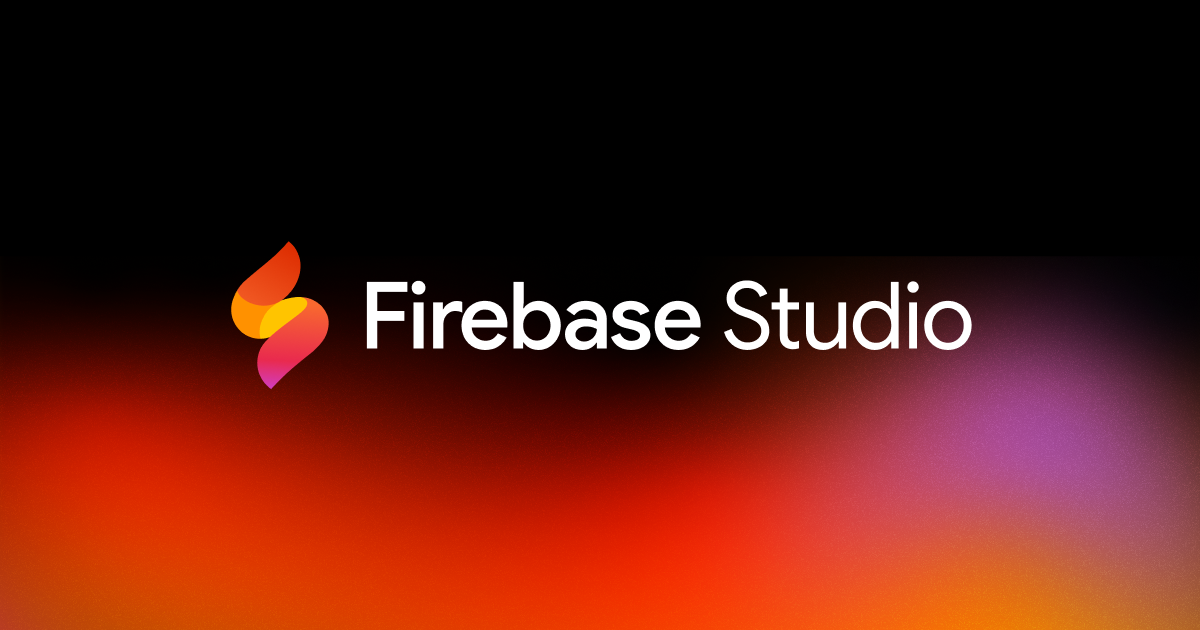
Google has officially released a series of updates to Firebase Studio aimed at expanding its AI development capabilities and deepening integration with popular frameworks and Firebase services.
For your information, the released features were unveiled at I/O Connect India.
At the core of the update are AI-optimised templates for Flutter, Angular, React, Next.js, and general Web projects. These templates enable developers to build applications in Firebase Studio using Gemini, Google’s AI assistant, with the workspace defaulting to an autonomous Agent mode.
“We’re unveiling new updates that help you combine the power of Gemini with these new features to go from idea to app using some of your favourite frameworks and languages,” said Vikas Anand, director of product management at Google.
Firebase Studio now supports direct prompting of Gemini to integrate backend services. Developers using App Prototyping Agent or an AI-optimised template can simply describe the desired functionality, and Gemini will recommend and incorporate relevant Firebase services, including adding libraries, modifying code, and assisting with configuration.
“You can get assistance from Gemini to help you plan and execute tasks independently without waiting for step-by-step approval,” said Jeanine Banks, vice president and general manager, Developer X at Google.
AI News
Nvidia, AMD to Resume AI Chip Sales to China in US Reversal

Nvidia reportedly plans to resume sales to China that’s become part of a global race pitting the world’s biggest economies against each other. The company’s announcement on Monday comes after Nvidia CEO Jensen Huang met with President Donald Trump at the White House last week.
AMD AI Chip Plan For China
AMD also planning to restart sales of its AI chips to China. “We were recently informed by the Department of Commerce that license applications to export MI308 products to China will be moving forward for review,” the company said in a statement to CNN. “We plan to resume shipments as licenses are approved. We applaud the progress made by the Trump Administration in advancing trade negotiations and its commitment to US AI leadership.”
Treasury Secretary Scott Bessent told Bloomberg in an interview Tuesday that the Nvidia export controls have been a “negotiating chip” in the larger US-China trade talks, in which the two countries have made a deal to lower tariffs charged on one another.

The same day Commerce Secretary Howard Lutnick said that the resumption of Nvidia’s AI chip sales to China was part of the trade agreement with Beijing on rare earths. “We put that in the trade deal with the magnets,” he told Reuters, referring to rare earth magnets.
“In order for America to be the world leader, just like we want the world to be built on the American dollar, using the American dollar as a global standard, we want the American tech stack to be the global standard,” Huang told CNN’s Fareed Zakaria in an interview that aired Sunday. “We love that the internet is created by American technology and is built on American technology, and so we should continue to aspire to that.”

 AI News6 months ago
AI News6 months agoTurn Photos into Videos Using Google Gemini AI

 AI News6 months ago
AI News6 months agoApple New AI Model Can Detect Pregnancy With 92 percent

 AI News6 months ago
AI News6 months agoGoogle hires Windsurf execs in $2.4 billion deal

 AI News5 months ago
AI News5 months agoGoogle Expands Firebase Studio with AI Tools for Popular Frameworks

 AI News5 months ago
AI News5 months agoOpenAI has now restored the services after outage

 AI Tutorial6 months ago
AI Tutorial6 months agoHow to Turn Off Microsoft AI Features

 AI Tools6 months ago
AI Tools6 months agoIs This Simple Note-Taking App the Future of AI?

 AI News6 months ago
AI News6 months agoGoogle launches Gemini CLI, an open source AI agent

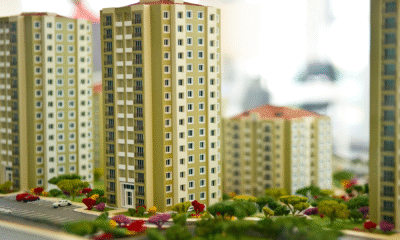



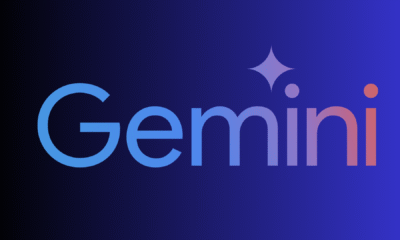


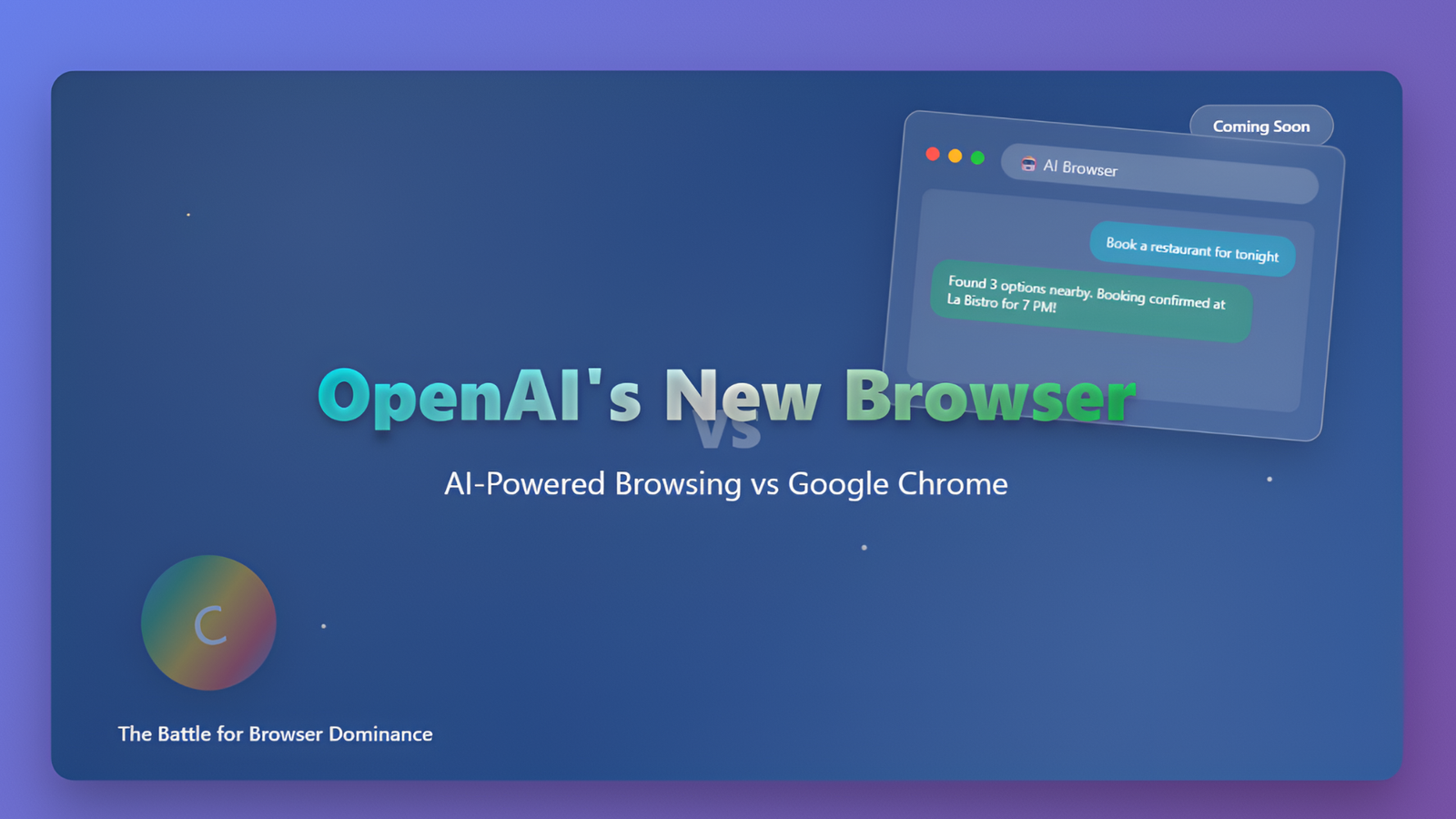


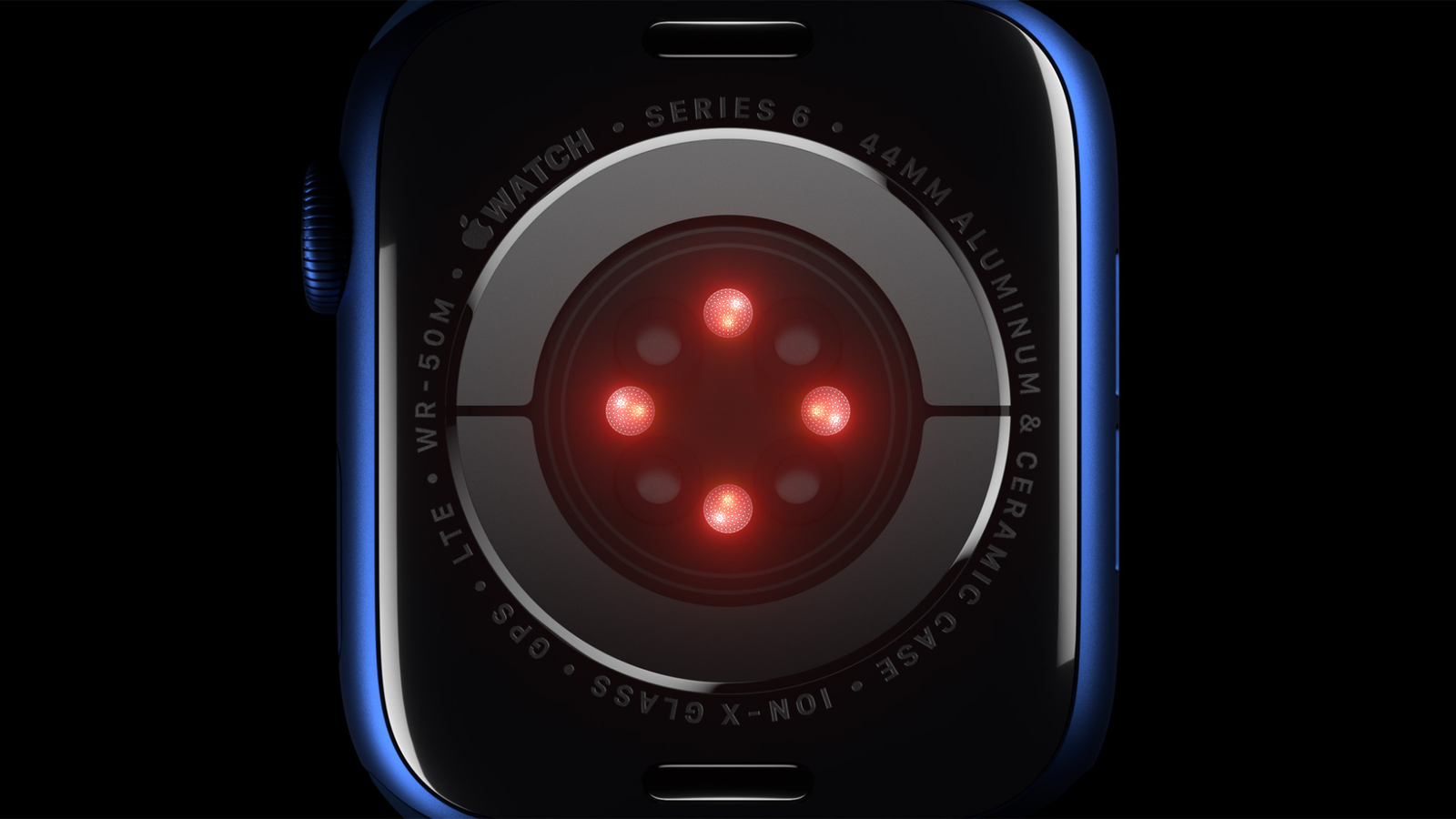
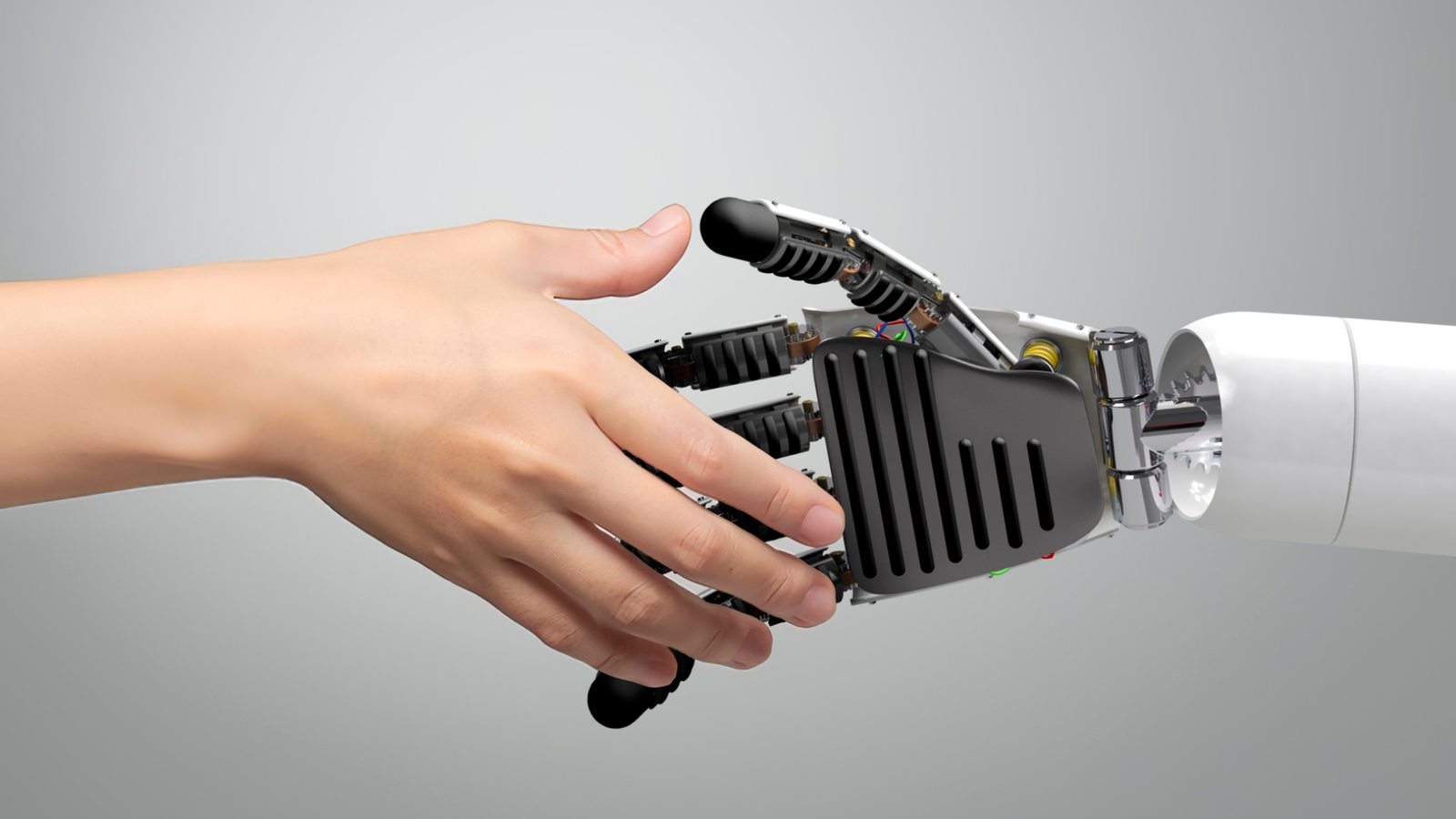
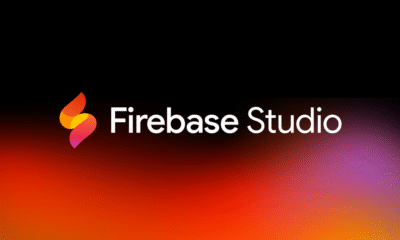
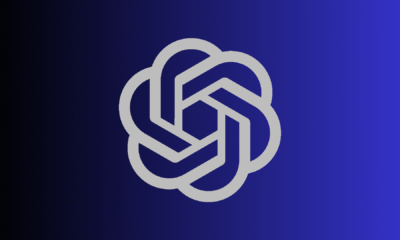

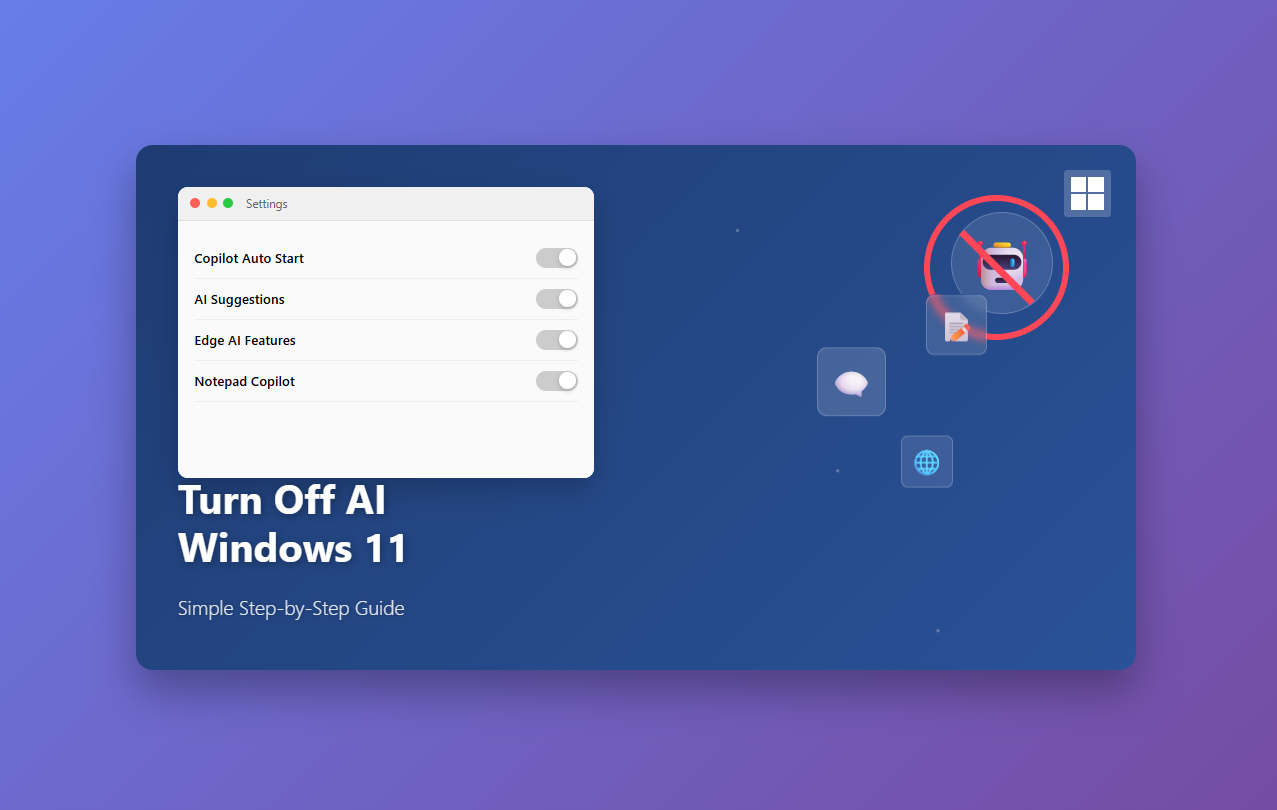
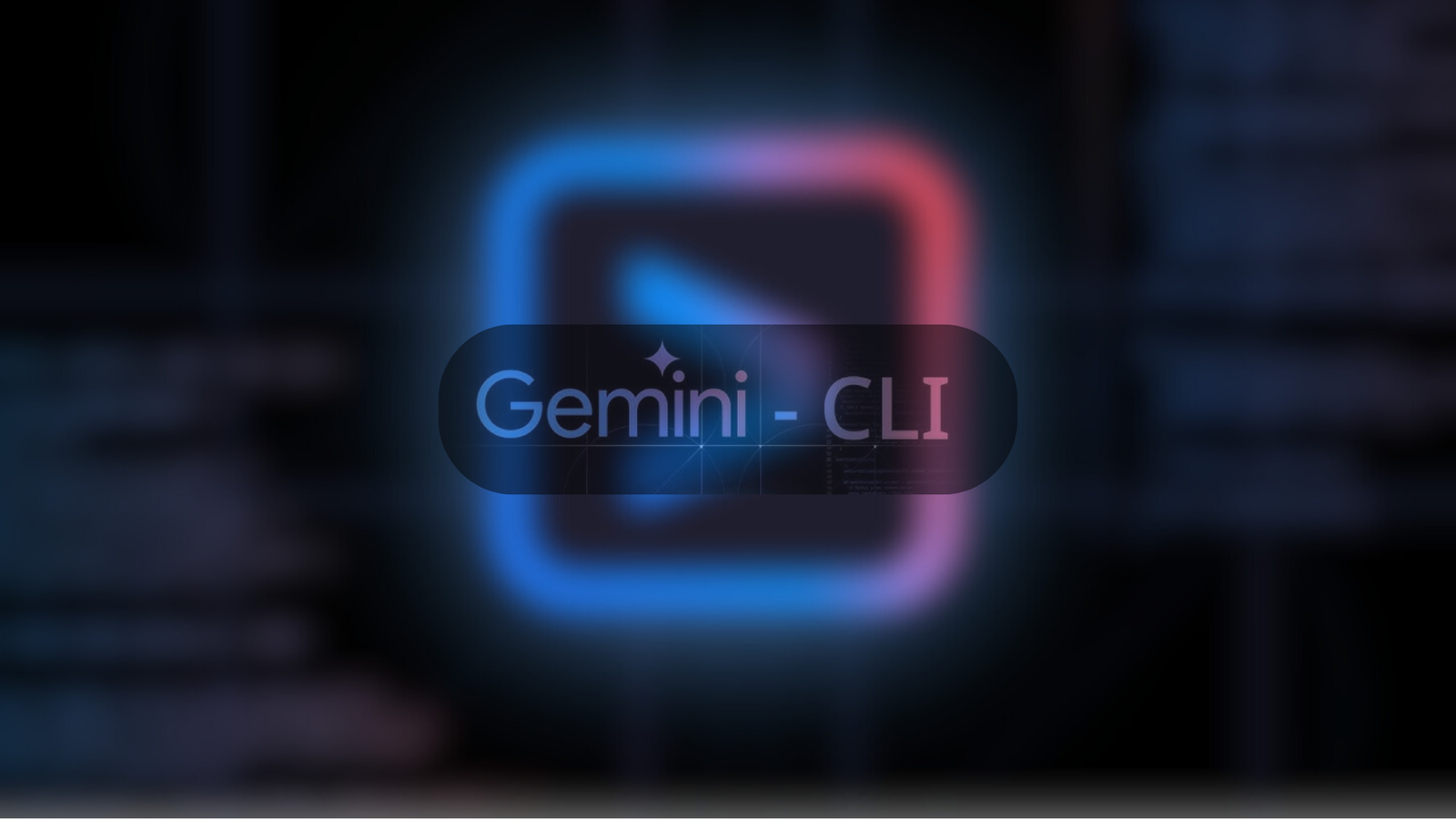
Pingback: Microsoft to cut up to 9,000 more jobs as it invests in AI - AI Tools Daddy